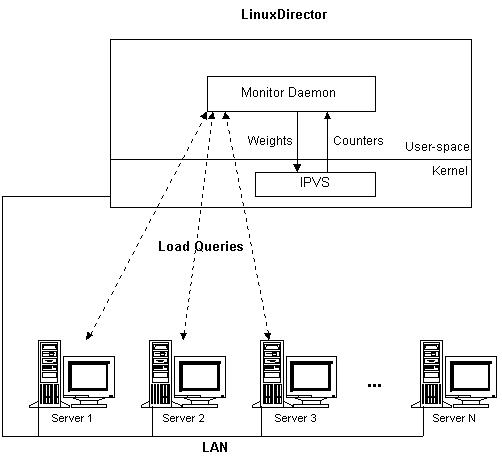Dynamic Feedback Load Balancing Scheduling
Contents
Introduction
Dynamic feedback load balancing scheduling algorithm considers the real-time loading and response time of each backend server, and adjusts the percentage of forwarded requests among the servers, in order to avoid some servers that may be overloaded still receive a lot of requests. This algorithm can help improve throughput of the whole system.
The working environment of this algorithm is illustrated in the following figure, there is a Monitor Daemon running on the load balancer, which is to monitor the availability and load information of each server. The Monitor Daemon can compute an aggregated load value based on all the load information for each server, and calculate a new server weight according to the aggregated load value. If the difference of new server weight and old server weight is more than the threshold, the Monitor Daemon adjusts the server weight with the new one in the IPVS inside the kernel. Usually, weighted round-robin scheduling or weighted least-connection scheduling is used for connection scheduling.
